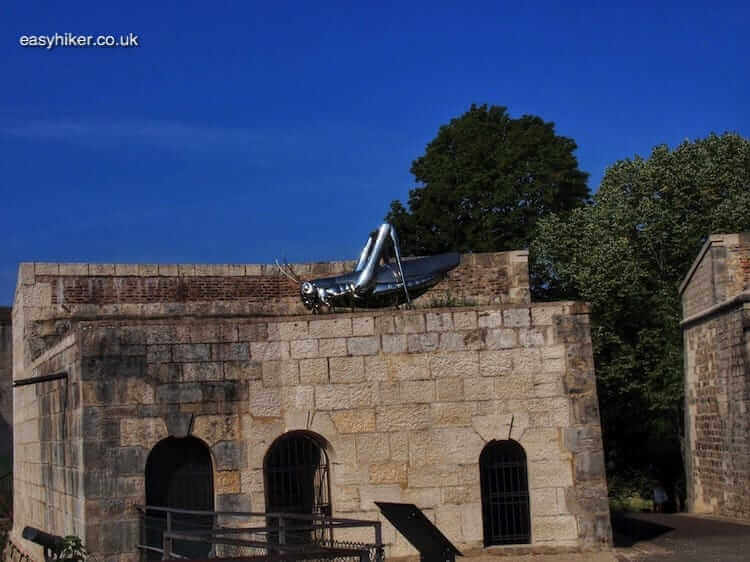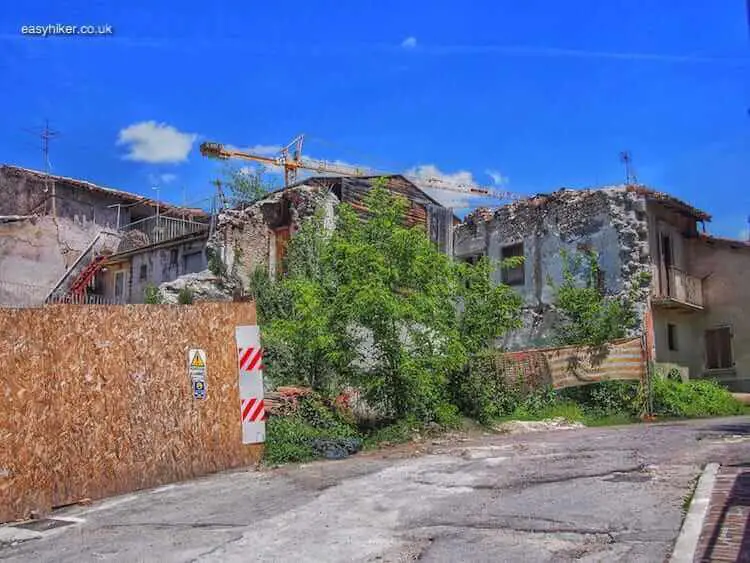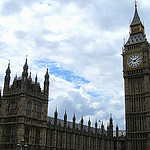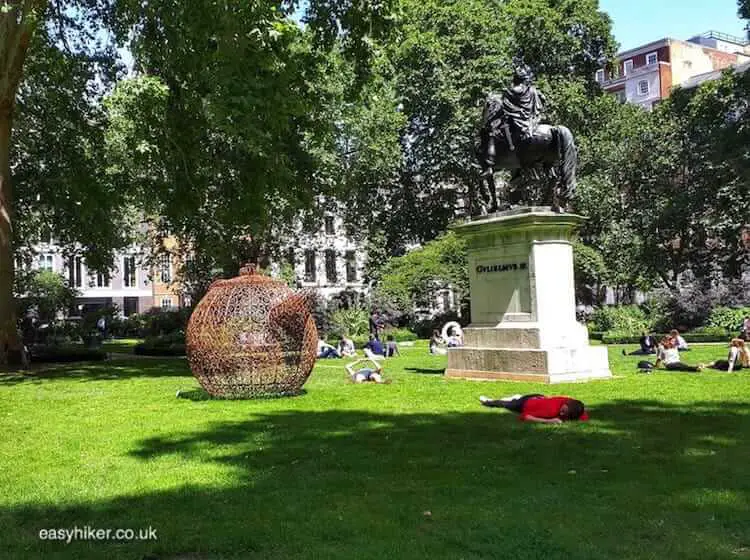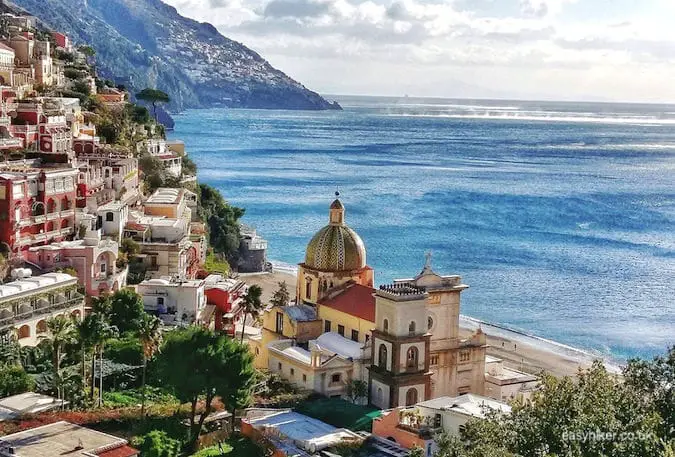Proust’s novel In Search of Lost Time is a big book in every sense of the phrase. In 7 volumes and a total of more than 1.2 million words, it deals with a lot of large topics: memory, social and political upheaval, love and death.
On top of that, it features a large cast of characters, recruited mainly from the Parisian high society of the early 20th century – aristocrats, high-ranking civil servants and a few wealthy bourgeois.
Due to its length and complexity, the novel is notoriously difficult to condense into a short abstract.
Here then is Easy Hiker’s contribution to the Summarize Proust Competition: One social class, the aristocracy, has entered the stage of irreversible decline, while another class, the bourgeoisie, is on the rise, and European civilization – despite the undeniable intellectual, moral and spiritual failings of individual aristocrats – is the worse for it. Standards of artistic excellency have fallen, the loud and the brash are silencing the profound, mediocrity prevails. A world – for Proust, the world – is coming to an end.
Why am I telling you all this? Some of you may already have guessed where this is going. Yes: I do believe that a walk through the streets of the French capital can serve as an approach to Proust’s monumental work, whether you are already familiar with its themes or not.
In Search of Lost Time, after all, is also a novel about Paris.

In Search of the Lost Paris of Marcel Proust
Or, to qualify this: a novel about a small part of Paris at a specific moment in time. The residential areas of Paris’s working class and professional middle class receive no attention at all.
Even more remarkable considering Proust’s lifelong interest in the visual arts, there is nothing about Montmartre or Montparnasse, although the artistic movements that are associated with these quarters neatly coincide with the period covered by the book.
Proust, instead, opts to concentrate on just two of the city’s quarters: the Faubourg St Germain, the traditional home of the French nobility, and the quartier around the Champs Elysees, the neighbourhood of the rich bourgeoisie who had made their fortunes in the economic boom of the Second Empire.
Marcel Proust’s Paris may be small, but it is nevertheless difficult to chart with any degree of precision. Addresses are rarely specified and generally only hinted at through expressions such as “in the direction of” and “around”.
Ultimately, the main theme of In Search of Lost Time is the author’s search for a lost world (much of the novel was written during and after WWI), not the lost world as such. Atmosphere and mood are therefore important, and any walk that tries to follow the outline of Proust’s work will need to reflect this.
We begin our walk in search of the lost Paris of Marcel Proust on neutral ground, in the place where Proust’s two feuding tribes regularly congregated for shopping, restaurant visits and social functions: in the area north of the Place de la Concorde where 19th century Parisians went to be seen.
The most exclusive institution of the period was the Rue Royale Club in the Hotel de Coislin which overlooks the Place de la Concorde …

… of which, we are told, Swann – one of the book’s key characters – is a member.
James Tissot’s painting The Circle of the Rue Royale shows the balcony on which the upper echelon of Parisian nobility has gathered: on show are one prince, 5 marquises, 3 counts plus, at the far right – the dapper gentleman with the grey cylinder – the Jewish convert Charles Haas, the model for Swann in Proust’s novel.

In one of the most remarkable passages of the entire book, Proust (in volume 4 “The Captive”) breaks the 4th wall with this paean: “My dear Charles —, whom I used to know when I was still so young and you were nearing your grave, it is because he whom you must have regarded as a little fool has made you the hero of one of his volumes that … your name will perhaps live.”
Moving from the exclusive to the (relatively) popular end of the quartier, we continue into Rue Royale, passing the former Thé de la Rue Royale (at no.3), now a part of the restaurant Maxim’s, and the former premises of the florist Lachaume (no. 12), now a clothes shop. Only one of the period’s institutions has survived: this is the Ladurée tea room, still going from strength to strength at no. 16.

This is where Swann’s mistress (later his wife) Odette takes her tea because she believes that showing her face here is “indispensable for the cultivation of a woman’s reputation for elegance”. Although few people will believe that today, one can still see wherethis idea came from.

Now take a left turn to look for the lost Paris of Marcel Proust into the Rue du Faubourg St Honoré.
Today, the Faubourg St Honoré is the French capital’s most elegant district, but its reputation in the Belle Epoque was not yet quite so high. It remains a mystery to many readers why Proust decided to select this quartier as the place of residence for the Duchess of Guermantes, the most formidable aristocratic lady of the book and young Marcel’s powerful friend. All her aristocrats friends and relatives, after all, were living in the Faubourg Saint Germain on the other side of the Seine.
Today, you are most likely to meet civil servants and diplomats here – the district is home to the Elysee Palace (seat of the French President) and the embassies of the UK and the US – or the kind of people who are buying their gear from the posh shops that are lining the streets. As well as low-budget tourists who, instead, opt to take photos of the elegantly decorated shop windows.

Turning left into Avenue Marigny, you will be passing the Jardins des Champs Elysees where young Marcel spends many an afternoon with his childhood crush Gilberte, the daughter of Swann and Odette.
It is on one of these benches where Marcel’s grandmother is resting, following her – eventually fatal – uremic shock.

Turning right into the Champs Elysees, we are now entering the heart of “Second Empire” Paris, the part of town that Proust rarely refers to without a sneer. Get a feel for the area’s atmosphere before taking a left turn just behind the corner of Rue de Berri, …

… because it is here where Marcel, now a young man and ”taking his cab in the direction of the Etoile”, spots Gilberte – “close to her house“ – and is at her door “moments later“.
Cross the Champs Elysees and continue in the direction of the Avenue Foch because that’s where the Swanns lived: “out by the Bois“ we are told, which means: towards the Avenue du Bois (renamed in 1929).
We can safely assume that the Swanns would have lived in a hotel particulier, a private mansion rather than in an apartment block, and you will spot only a few possible candidates along the way.
What’s more, almost all of the older buildings in this part of town bear the hallmarks of the muscular “Second Empire” style of which, we know, neither Swann nor Proust were particularly fond.
Nowadays, most of these buildings are housing banks or the offices of multinational corporations.

Just after crossing the Avenue d’Iena, we will reach the Rue La Perousewhere Odettelived before marrying Swann.
In one of the most famous scenes of Vol. 1 (the Chapter called “Swann in Love”), Swann – possessed by a sudden fit of jealousy – decides to check out his mistress late at night, stopping his cab “close to her house, in a little street running at right angles to that other street, which lay at the back of her house, and along which he used to go, sometimes, to tap upon her bedroom door”.
From this spot, which can be easily identified as the corner between the Rue La Perouse and the Avenue des Portugais …

… he then “walked a few yards” into that little parallel street “at the back of her house” (called Rue Dumont d’Urville), so Odette’s home could not have been far away from the corner.
Proust’s inspiration for Odette, the courtesan and bohemian artist Laure Hayman, actually lived on Rue La Perouse in a building that no longer exists (no. 4), so you are free to pick a back window that looks like the most suitable stand-in.

Continue westwards and cross Avenue Kleber to proceed towards the Avenue Foch, the most expensive residential street in Paris and the very embodiment of the Belle Epoque, the period roughly between 1860 and WWI, and a monument for the new power of the bourgeoisie.
Even the Prince de Guermantes, following his marriage to the (commoner) Mme Verdurin, builds himself a house here. Few grand mansions from the period, however, are still standing.
The Musee d’Ennery from 1875 is one of these rare survivors and gives you an idea what the Guermantes villa may have looked like …

… but other than that, today’s “Avenue des Bois” is mainly lined by apartment buildings.

So this is the style of the Belle Epoque: full of confidence, energy and ostentation as well as a love for the grand gesture.
But why do Proust and his narrator appear to believe that it falls short when compared with its predecessor’s virtues?
More about that next week when we will visit the Faubourg Saint Germain on the other bank of the Seine.


